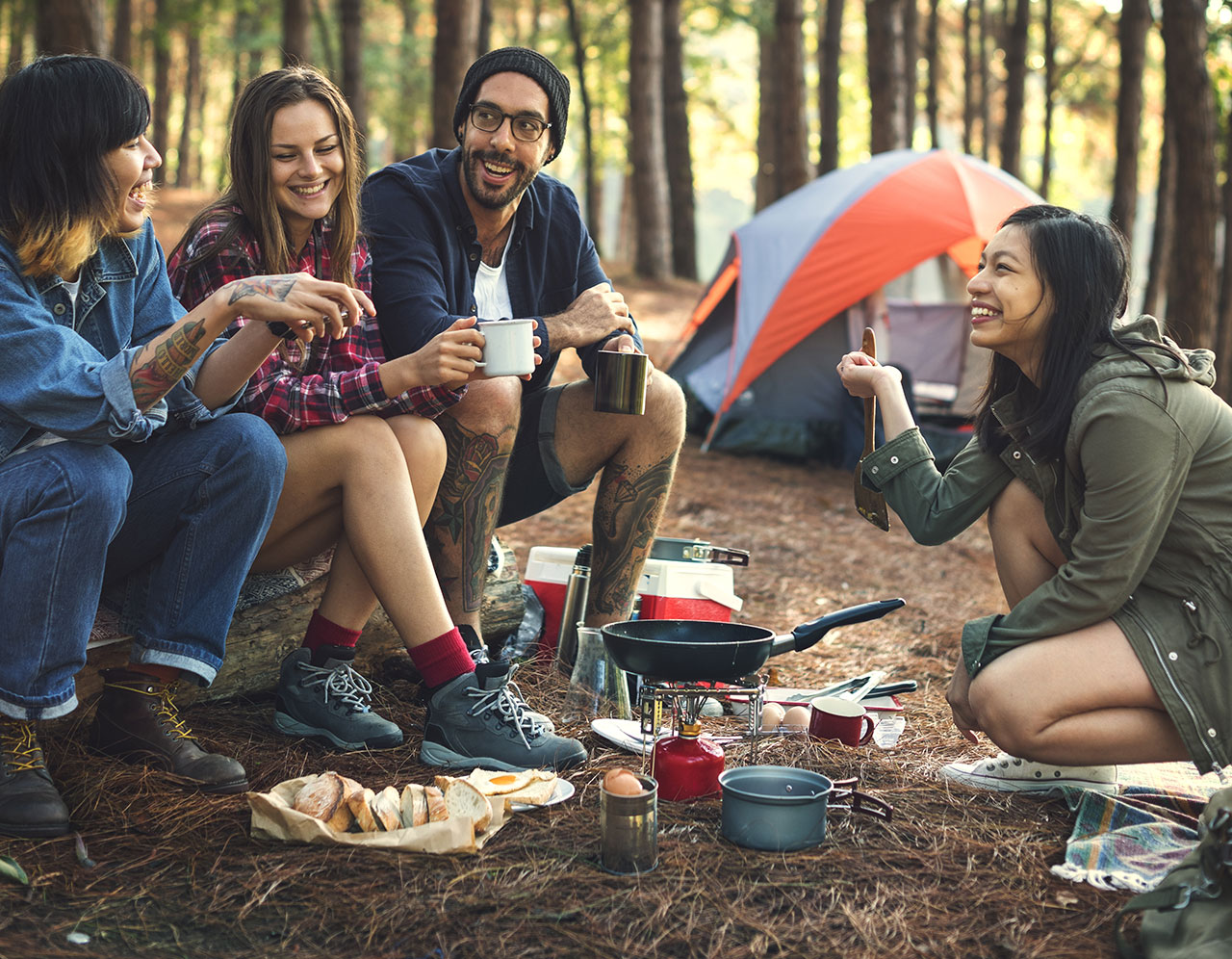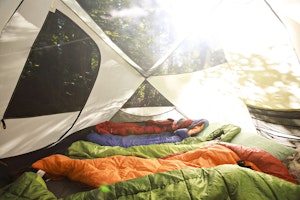Either because of nostalgia from our childhoods, or perhaps a true love of the outdoors, camping often makes the list of summertime trips. We have idyllic images of camping activities and lifelong memories to be made, but what we often don’t think about is the make or break deal that a good night’s sleep can be in a camping trip.
Proper planning for your camping sleep environment can contribute to the enjoyment of your trip because if you can get better sleep, you will wake refreshed and ready to have fun – the whole reason you wanted to go camping in the first place.
There’s so much gear out there to make camping more comfortable that you will likely get overwhelmed when you start looking. Focus on the three things below and that will help you narrow down the choices and decisions you have to make.
On or off the ground
While camping usually conjures images of people zipped up in sleeping bags on the ground, some folks opt to catch their Zzzz in a cot or hammock.
Cot sleeping is easier on the back and for those who have trouble getting up off the ground, but disadvantages are size and weight for portability and transport. For backpackers, the hammock may be the way to go. Some can break down and fit into a one-quart bottle. And imagine being rocked to sleep like a baby in a hammock!
Most people, however, choose to sleep on the ground because they don’t want to bring “more stuff,” and even in most conditions for cot and hammock sleepers, a sleeping bag and pad are still needed.
Sleeping bag, pad and temperature
A sleeping bag suited for your body and the climate is the absolute essential, but more and more campers are saying that a good sleeping pad to cushion your body from the hard ground is another vital piece of gear. When choosing a sleeping bag and pad, bear in mind the temperatures where you’ll be camping.
The type of pad varies in the level of comfort you feel you need as well as the ease of transporting it. The simplest form is a sleeping bag-sized piece of closed-cell foam popular with backpackers because they are light, portable and pretty durable.
Moving up the comfort scale is a self-inflating pad of open-cell foam placed inside a nylon or polyester sleeve. When unrolled, the pad expands to its original size, and you can add air to it to make it firmer. While it is bulkier and not as portable as the other option, it may not be an issue for car campers and offer a lot more comfort.
Air mattresses are the most compact type of sleeping pad, but they’re not as durable as the foam pads and require more work to blow up, either by mouth or pump. Some people even use a mattress topper that they already own, if portability or packing room are not an issue.
Pillow talk
 There’s a good reason we often see people boarding long flights carrying a pillow. The pillow is a comfort essential no matter where you sleep, so if you have to cut some bulk or weight when packing the car or backpack, don’t ditch the pillow. The importance of keeping your spine and neck aligned for better sleep and health doesn’t change because you’re camping.
There’s a good reason we often see people boarding long flights carrying a pillow. The pillow is a comfort essential no matter where you sleep, so if you have to cut some bulk or weight when packing the car or backpack, don’t ditch the pillow. The importance of keeping your spine and neck aligned for better sleep and health doesn’t change because you’re camping.
There are similar choices in pillows as there are with the sleeping pads in terms of foam or inflatable types, but there are also many shapes and sizes to consider.

